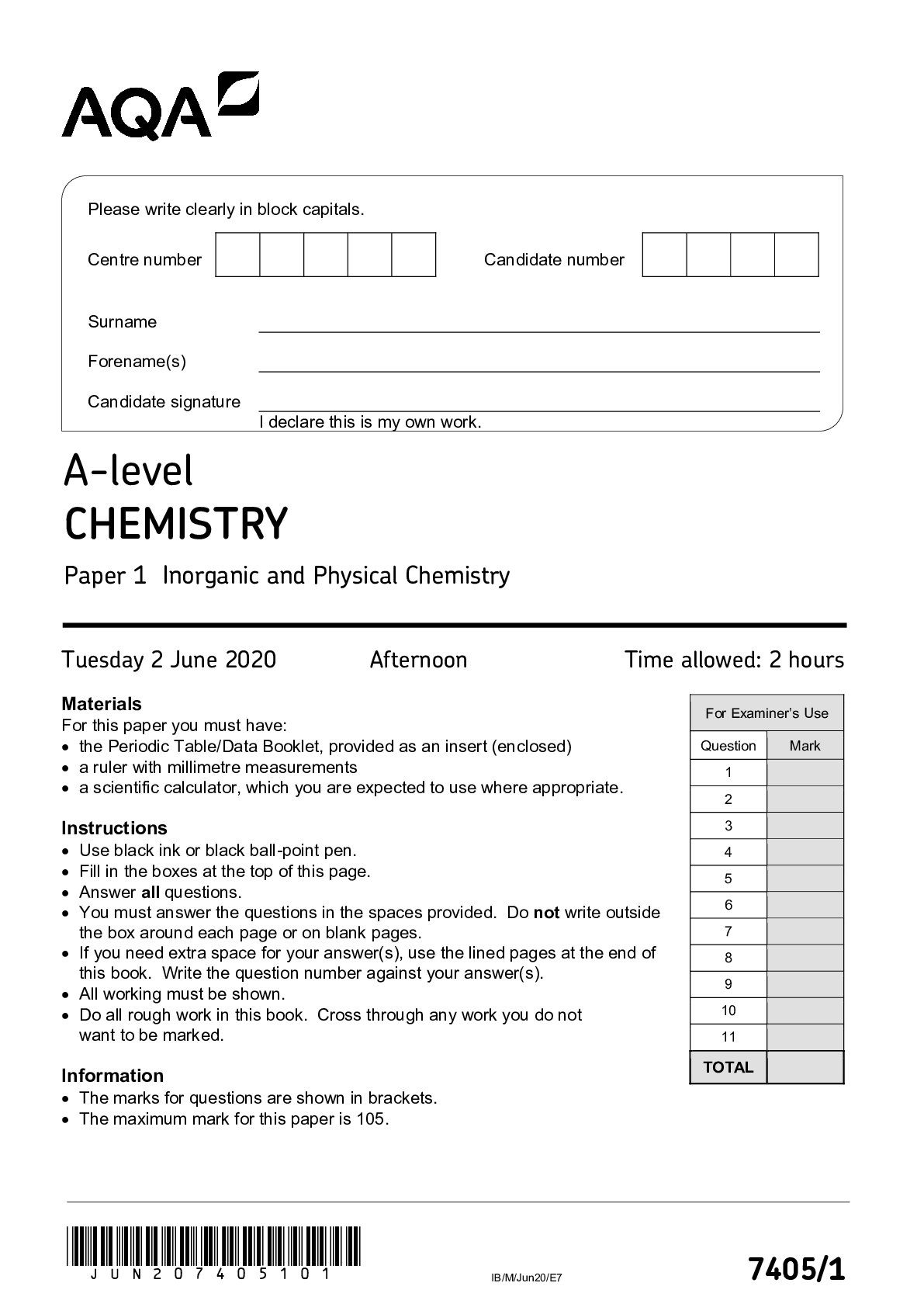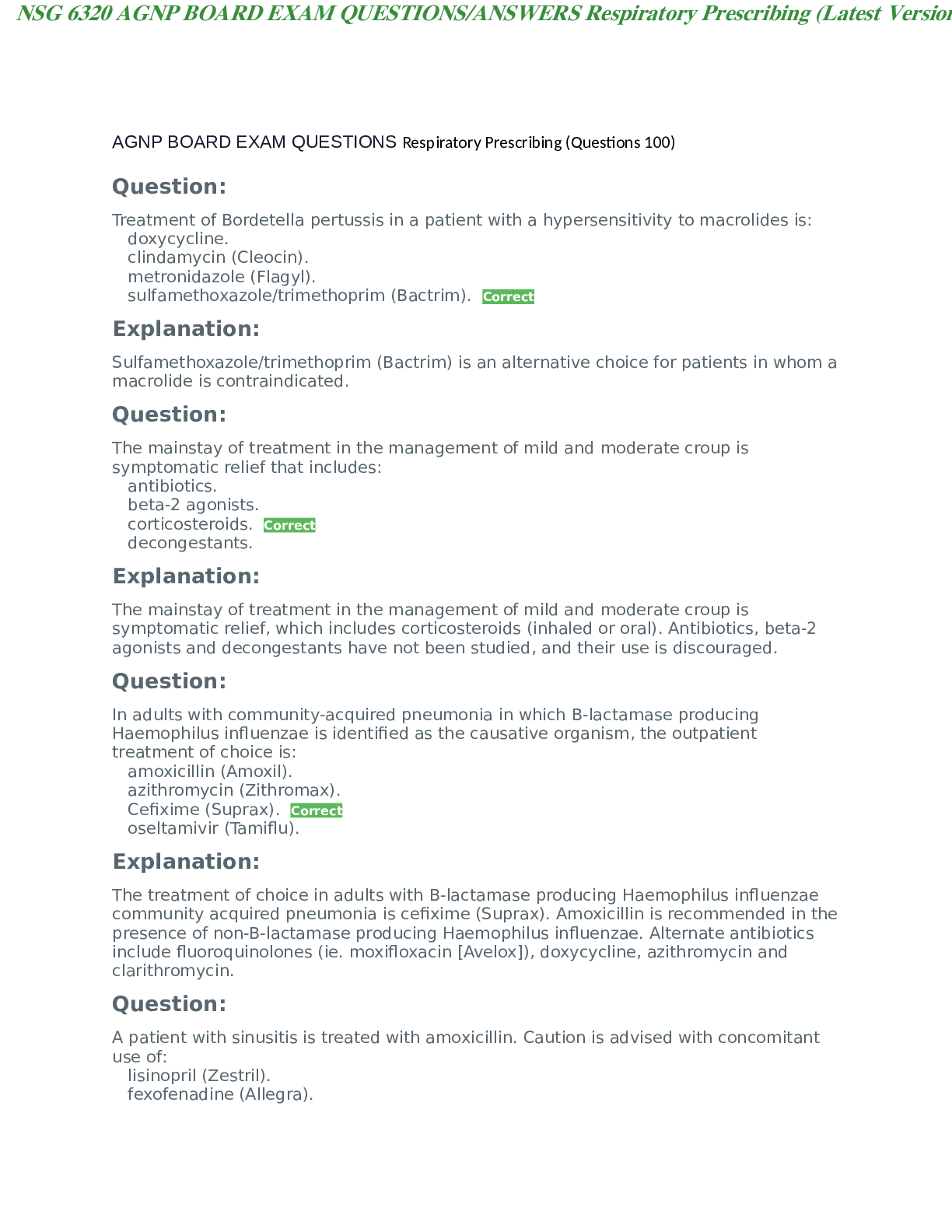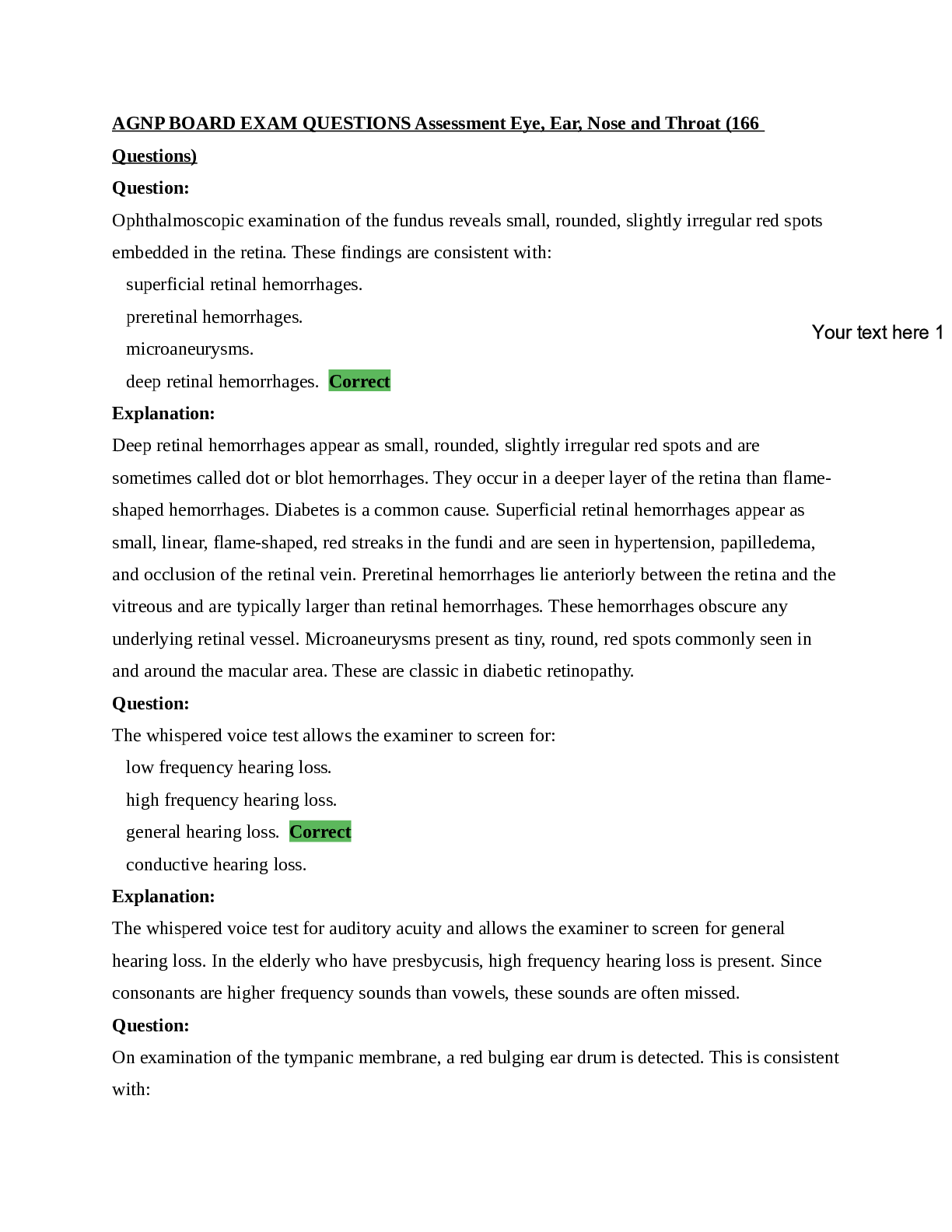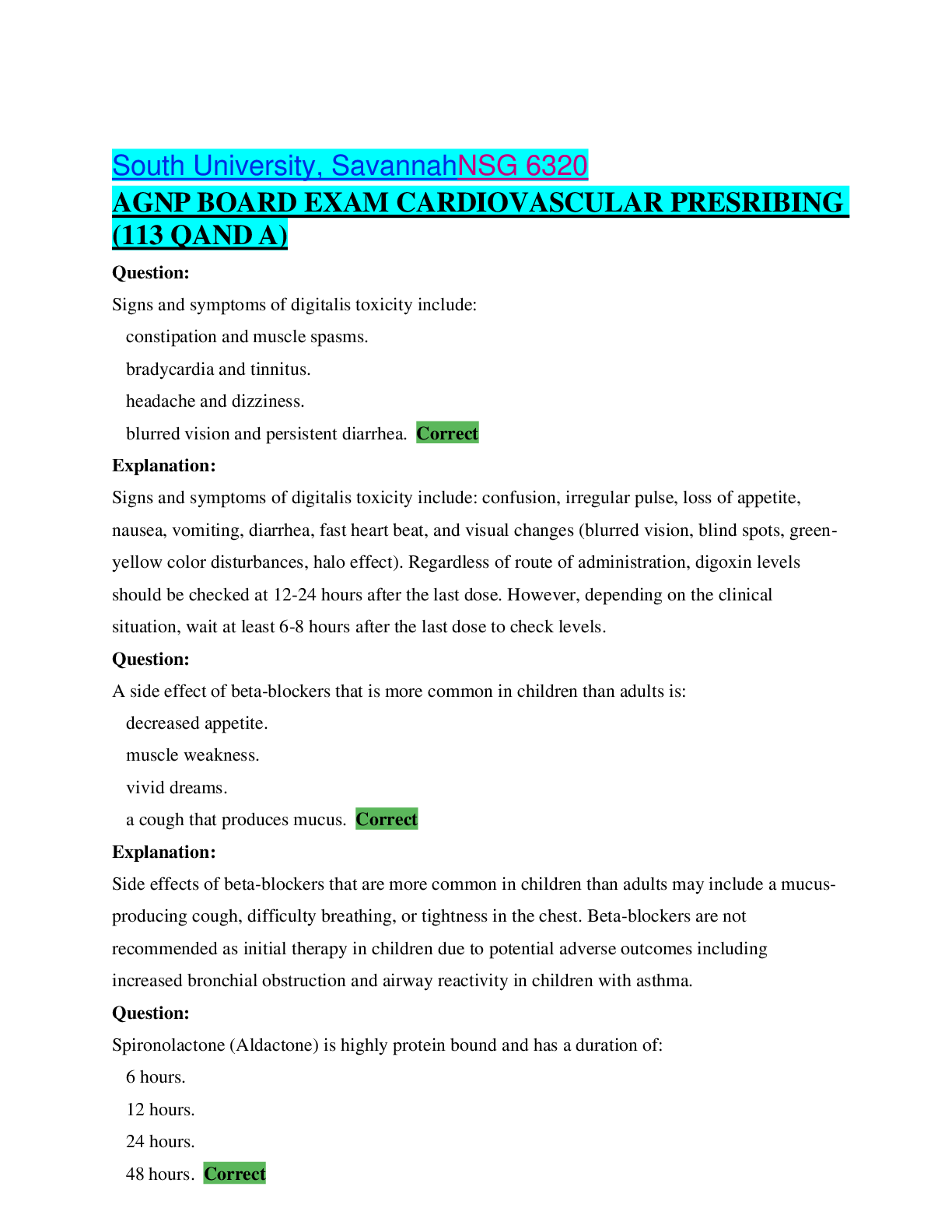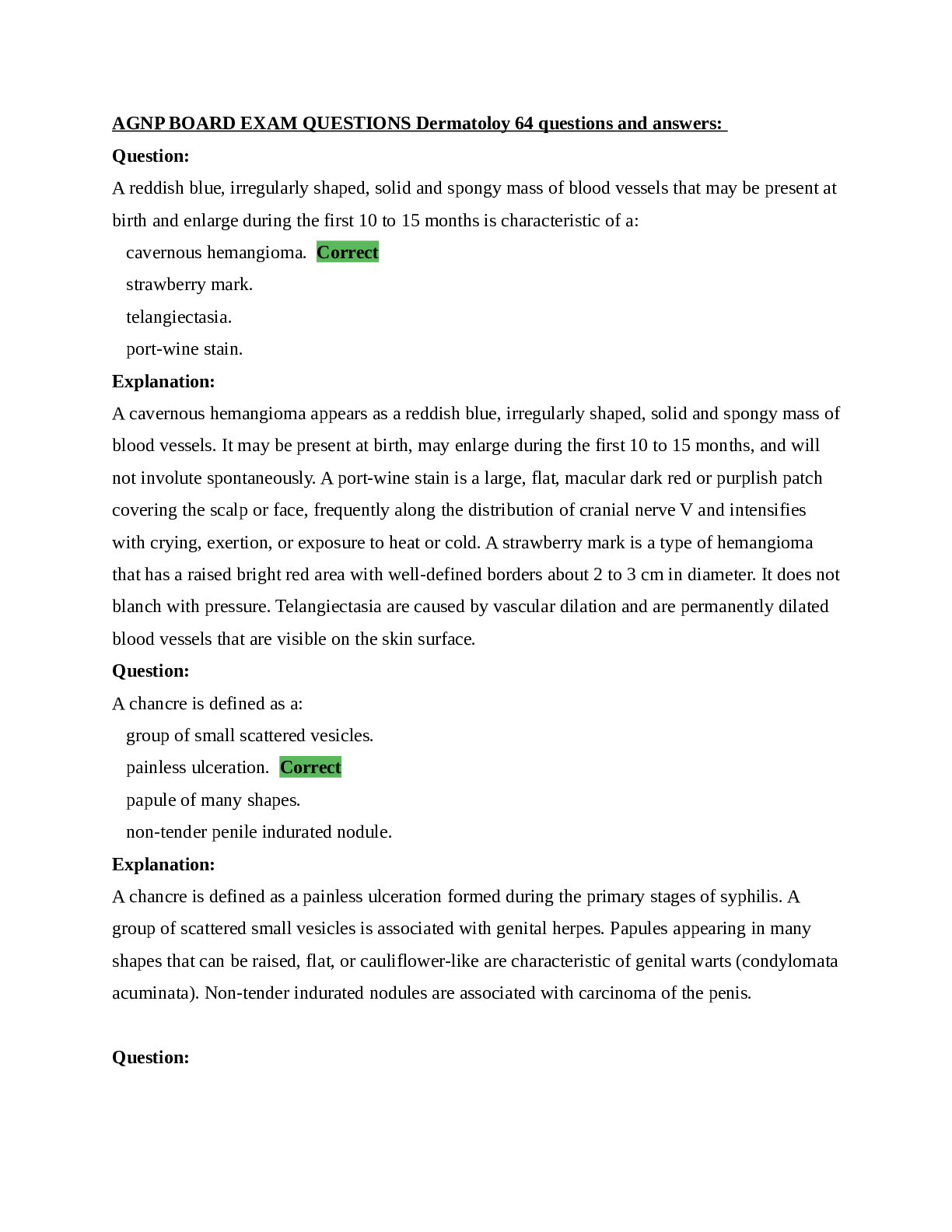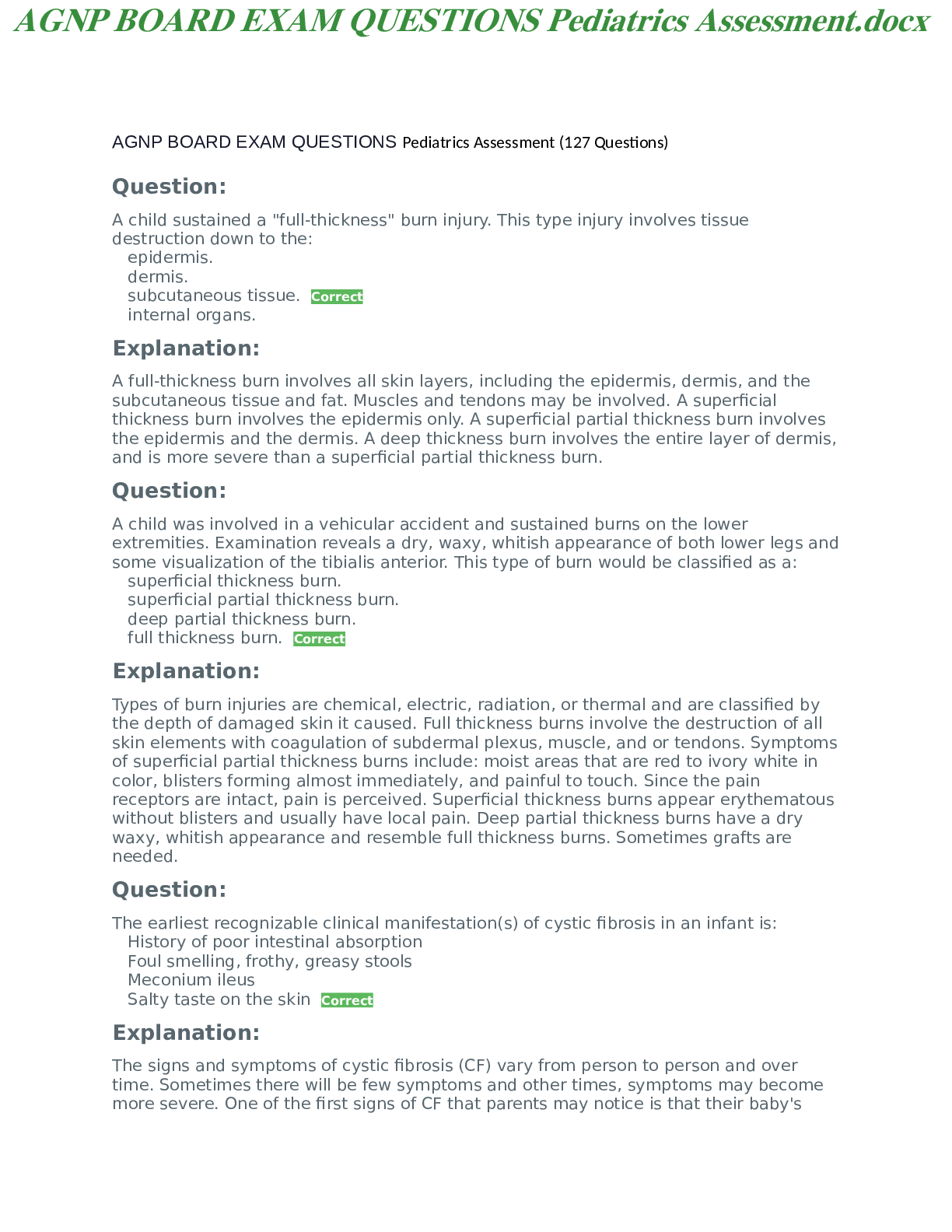*NURSING > EXAM > South University, Savannah NSG 6320 AGNP BOARD EXAM QUESTIONS Neurology Assessment.AGNP BOARD EXAM Q (All)
South University, Savannah NSG 6320 AGNP BOARD EXAM QUESTIONS Neurology Assessment.AGNP BOARD EXAM QUESTIONS Neurology Assessment.
Document Content and Description Below
AGNP BOARD EXAM QUESTIONS Neurology Assessment (Questions 194) Question: When eliciting deep tendon reflexes in the knee, the nurse practitioner notes an abnormal reflex in the right knee. This abn... ormality is probably consistent with a pathological lesion in which segmented level of the spine? Cervical 5 and 6 Cervical 6 and 7 Lumbar 2, 3, and 4 Correct Sacral 1 Explanation: The segmented levels of the deep tendon reflexes are: Ankle: sacral 1; knee: lumbar 2,3, & 4; Supinator and biceps: cervical 5 & 6; and triceps: cervical 6 & 7. Question: A 80 year old male visits the nurse practitioner for an annual well exam. History reveals two falls in the prior 12 months and difficulty with balance. The next step the nurse practitioner should take is: reassess the patient in 6 months. obtain cognitive and functional assessment. Correct assess respiratory assessment. assess cardiac function. Explanation: High-risk older adults, namely those with a single fall in the past 12 months with abnormal gait and balance and those with two or more falls in the prior 12 months, an acute fall, and/or difficulties with gait and balance, require further assessment to determine the reasons for the falls. Obtaining relevant medical history, physical exam, cognitive and functional assessment and determining multifactorial fall risks are essential to the preventing future falls. Question: When evaluating the sensory system, testing the spinothalamic tracts would include assessing sensations of: position and vibration. pain and temperature. Correct deep touch. discriminative sensations. Explanation: When evaluating the sensory system, testing the spinothalamic tracts would include assessing sensations of pain and temperature. Assessing position and vibration evaluate the posterior columns. Light touch assesses both the spinothalamic and posterior column tracts. To assess discriminative sensation, both the spinothalamic and posterior columns tracts as well as the cortex would be assessed. Question: When testing for corneal reflex, an absent blink reflex is noted. This finding may be suggestive of a lesion in which cranial nerve? Cranial Nerve II (CN II) Cranial Nerve IV (CN IV) Cranial Nerve VI (CN V) Cranial Nerve VII (CN VII) Correct Explanation: When testing for corneal reflex, an absent blink reflex would be suggestive of a lesion in cranial nerves V or VII (CN V or CN VII)-Trigeminal or facial nerves. [Show More]
Last updated: 1 year ago
Preview 1 out of 63 pages

Reviews( 0 )
Document information
Connected school, study & course
About the document
Uploaded On
Apr 27, 2022
Number of pages
63
Written in
Additional information
This document has been written for:
Uploaded
Apr 27, 2022
Downloads
0
Views
99

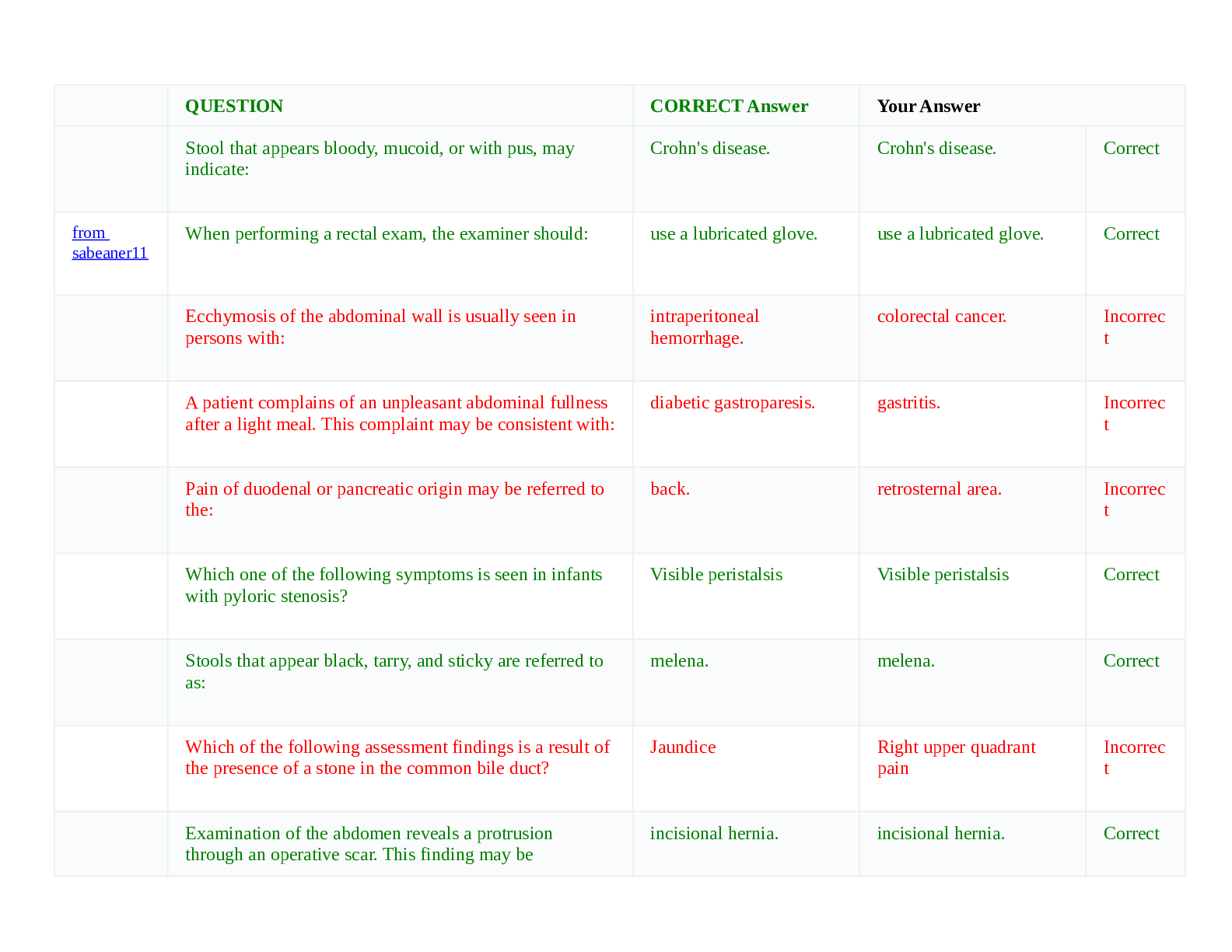
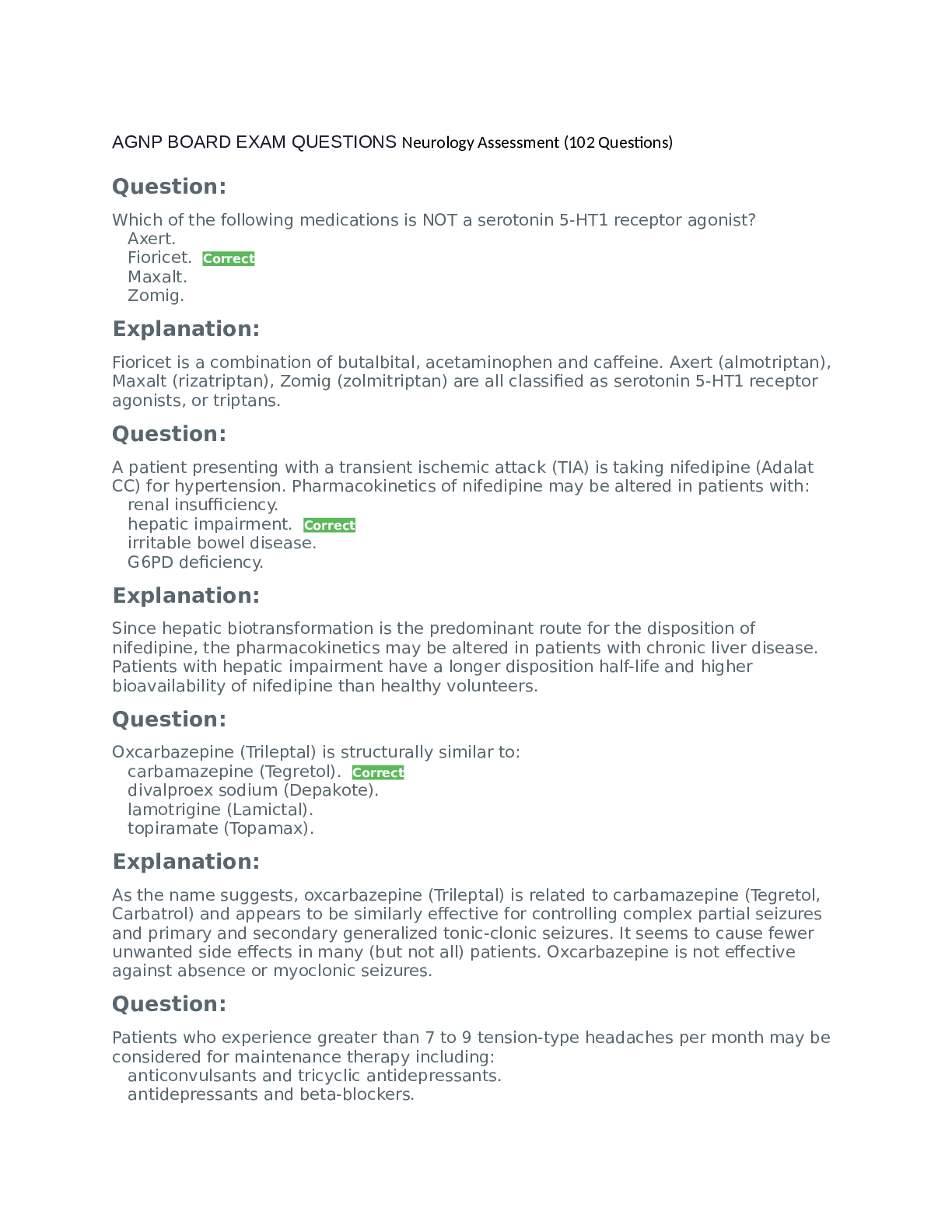
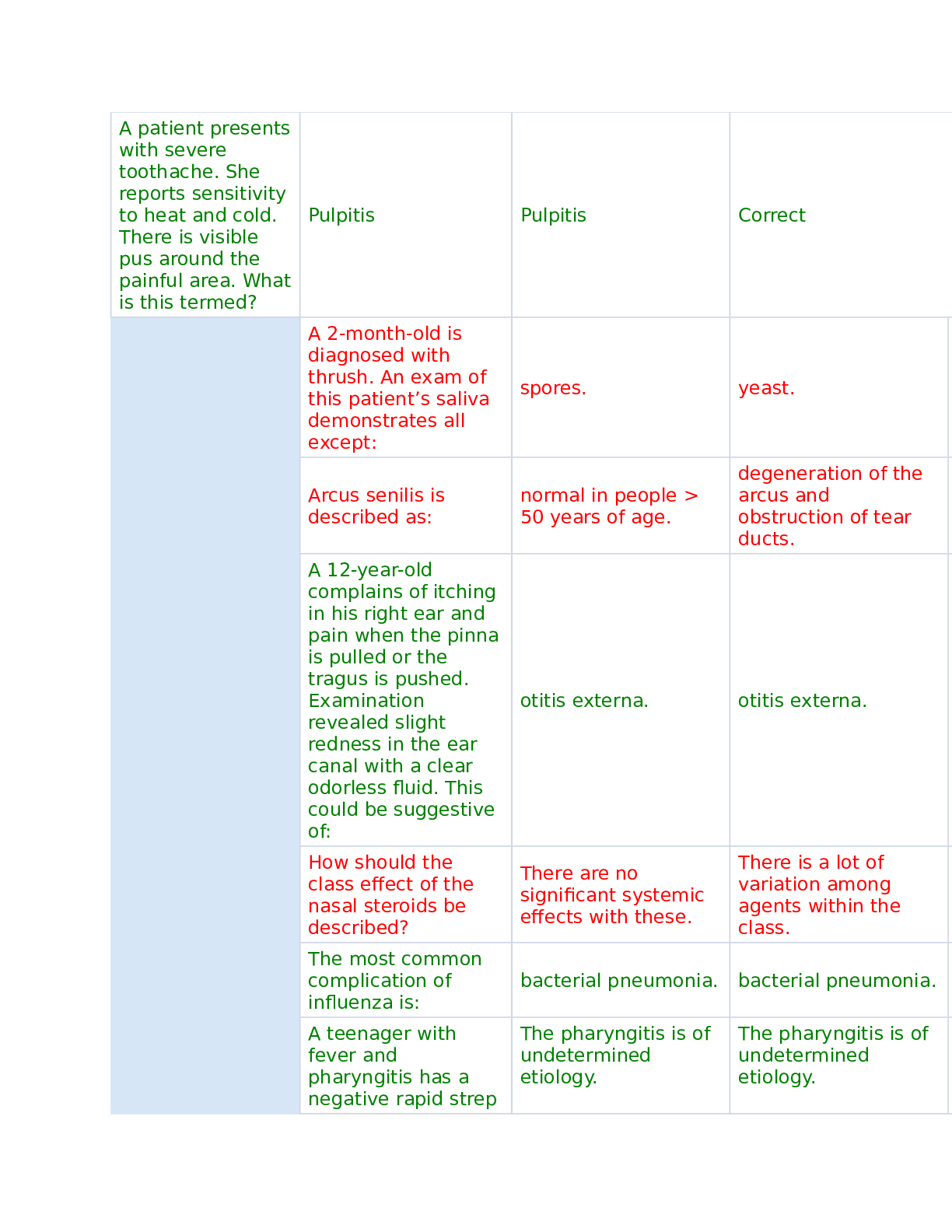
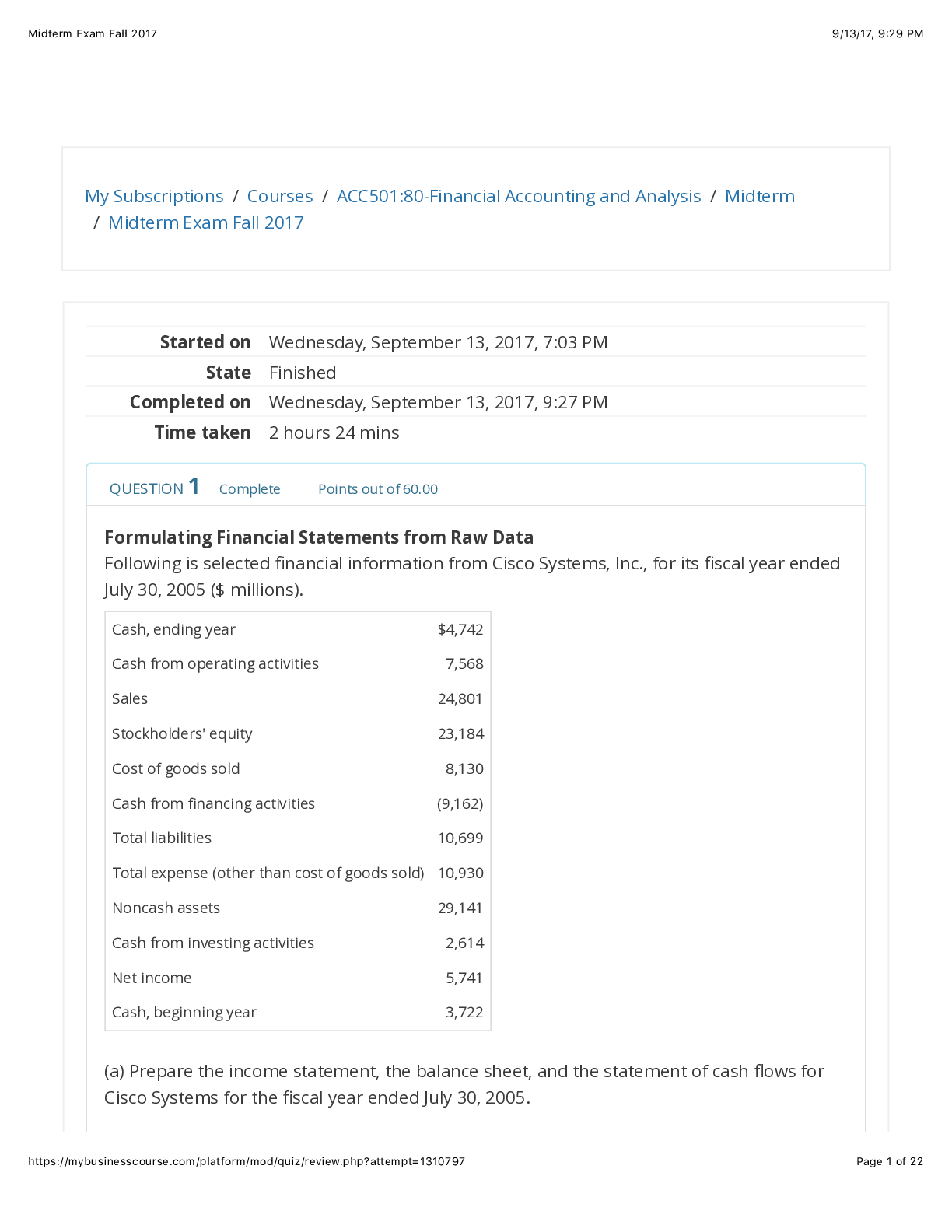


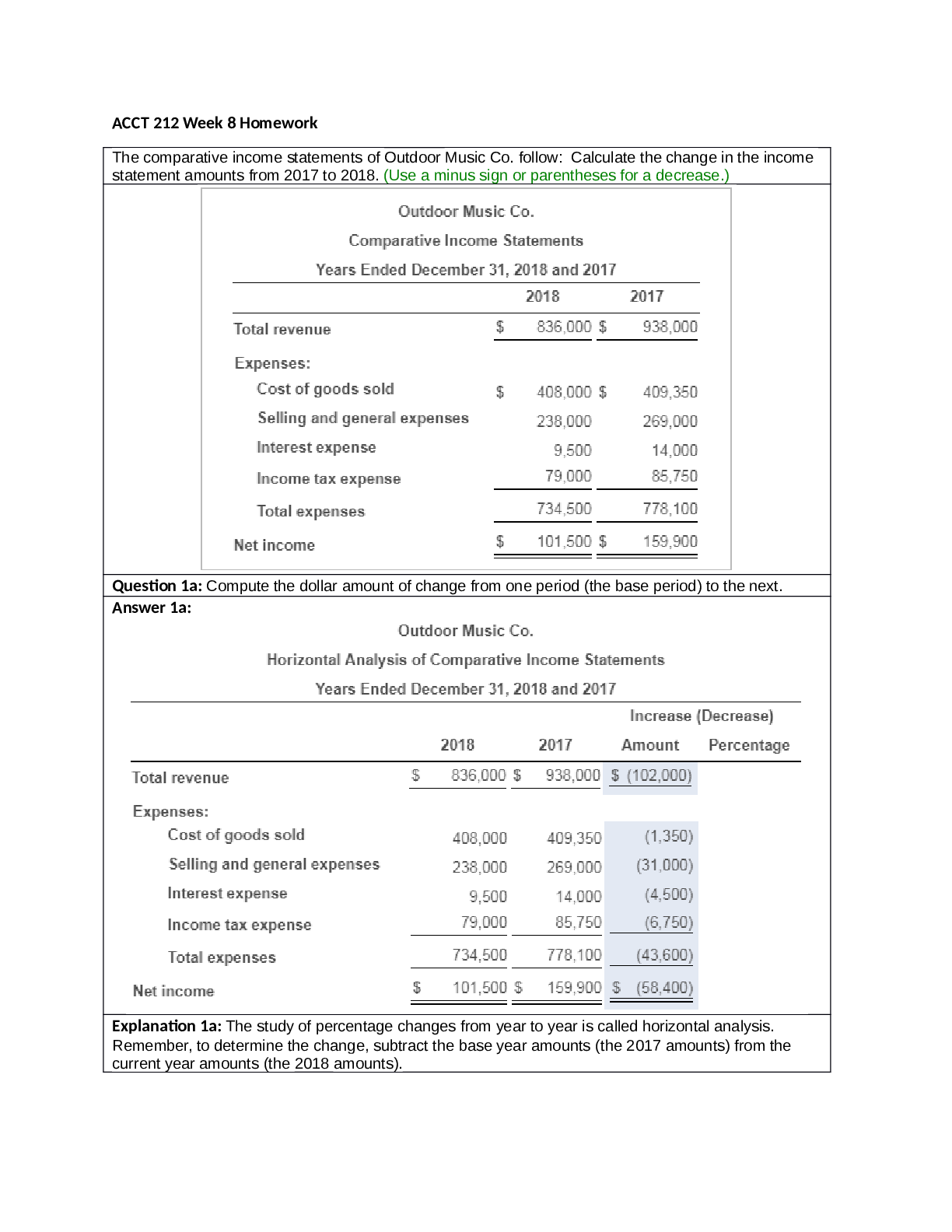
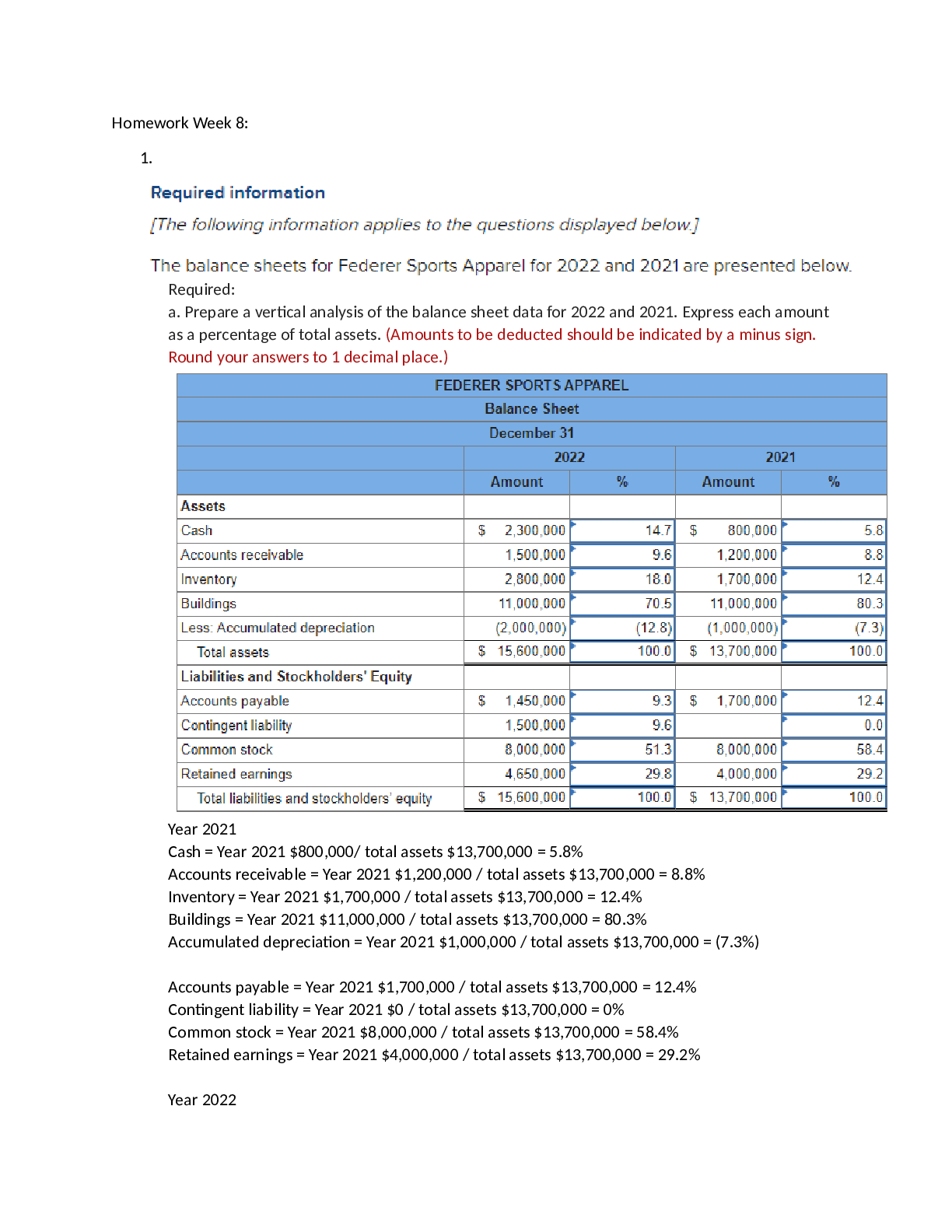
.png)
.png)


